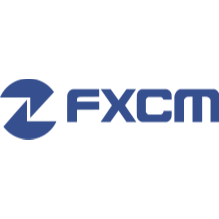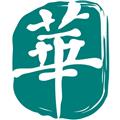亞美尼亞德拉姆
亞美尼亞德拉姆簡介
ISO 4217 Code:AMD
User(s):Armenia and the de-facto independent Nagorno Karabakh Republic
Inflation:1.1% (Armenia only)
Source:The World Factbook, 2006 est.
Subunit:1/100 luma (?????)
Symbol:??.
Coins:10, 20, 50, 100, 200, 500 dram
Banknotes :1000, 5000, 10 000, 20 000, 50 000 dram
Central bank:Central Bank of Armenia
Website:http://www.cba.am
The dram (Armenian: ????) (ISO 4217: AMD) is the monetary unit of Armenia. It is subdivided into 100 luma (Armenian: ?????). The word "dram" translates into English as "money", and is cognate with the Greek drachma. The Central Bank of Armenia has the exclusive right of issuing the national currency according to Armenian Law.
History
For earlier Armenian currency, see Armenian ruble.
The first instance of a dram currency in Armenia was in the period from 1199 to 1375 when silver coins were called dram.
On 21 September 1991 a national referendum proclaimed Armenia as an independent republic from the Soviet Union. The Central Bank of Armenia was adopted on 27 March 1993, under the governorship of Isahak Isahakyan. However the old Soviet bank notes were standard tender until November 1993. The modern dram came into effect on 22 November 1993, at a rate of 200 rubles = 1 dram (1 USD: 14.5 AMD). Banknotes of 10, 25, 50, 100, 200 and, 500 dram were issued, whilst, on 21 January 1994, the Central Bank of Armenia began minting 10, 20, 50 luma and 1, 3, 5, 10 dram coins. The banknotes in nominal value 1000 and 5000 dram were put into circulation since October 24, 1994 and September 1995, respectively. Later a 20000 dram note was issued and a commemorative 50000 dram note was issued to observe the 1700-th anniversary of adoption of Christianity in Armenia. It should be noted that the Dram is not pegged to any other currency, unlike the currencies of many other nations.
Coins
Coins in circulation
10 Dram 20 Dram 50 Dram 100 Dram 200 Dram 500 Dram Banknotes
Banknotes in circulation
500 dram 1,000 dram 5,000 dram 10,000 dram 20,000 dram 50,000 dram
In addition, the following banknotes are no longer legal tender (since April 1, 2004), but may be exchanged at banks: 10 drams, 25 drams, 50 drams, 100 drams. The 1993 500-dram banknote has also ceased to be legal tender since September 1, 2005, but there is a 1999 500-dram banknote that is still in circulation.
911.html">Money Supply
Currency in circulation has shown steady growth since first issue in 1993.
亞美尼亞德拉姆樣幣
Obverse Design: Armenian great composer Aram Khachatryan (1903-1978) and House of Opera
Reverse Design: An episode from "Gayaneh" ballet and mountain of Ararat
Obverse Design: Armenian astrophisic Victor Hambartsumyan (1908-1996) and depiction of space
Reverse Design: The Building of Byurakan observatory and telescope
Obverse Design: Armenian great architect Alexander Tamanyan (1878-1936)
Reverse Design: The House of the Government of the Republic of Armenia
Obverse Design: A portrait of an Armenian famous writer Yeghishe Charents
Reverse Design: A picture of old Yerevan - a two-storeyed building and a carriage harnessed by two horses
Obverse Design: Armenian great writer Hovhannes Tumanyan (1869-1923)
Reverse Design: M.Saryan's picture depicting nature of Lory.
Obverse Design: Armenian famous painter Martiros Saryan (1880-1972)
Reverse Design: A fragment from Saryan's landscape "Armenia"
Obverse Design: Depiction of Mother Cathedral of Holy Echmiadzin
Reverse Design: Armenian Church in the hands of Saint Gregory the illuminator and the king Tiridat the Great
Obverse Design: A portrait of an Armenian famous writer Yeghishe Charents
Reverse Design: A picture of old Yerevan - a two-storeyed building and a carriage harnessed by two horses
Obverse Design: Armenian great writer Hovhannes Tumanyan (1869-1923)
Reverse Design: M.Saryan's picture depicting nature of Lory.
Obverse Design: Armenian great writer Avetik Isahakyan (1875-1957)
Reverse Design: Depiction of Gyumri of the beginning of the 20th century
亞美尼亞德拉姆鑄幣
ISO 4217 Code:AMD
User(s):Armenia and the de-facto independent Nagorno Karabakh Republic
Inflation:1.1% (Armenia only)
Source:The World Factbook, 2006 est.
Subunit:1/100 luma (?????)
Symbol:??.
Coins:10, 20, 50, 100, 200, 500 dram
Banknotes :1000, 5000, 10 000, 20 000, 50 000 dram
Central bank:Central Bank of Armenia
Website:http://www.cba.am
The dram (Armenian: ????) (ISO 4217: AMD) is the monetary unit of Armenia. It is subdivided into 100 luma (Armenian: ?????). The word "dram" translates into English as "money", and is cognate with the Greek drachma. The Central Bank of Armenia has the exclusive right of issuing the national currency according to Armenian Law.
History
For earlier Armenian currency, see Armenian ruble.
The first instance of a dram currency in Armenia was in the period from 1199 to 1375 when silver coins were called dram.
On 21 September 1991 a national referendum proclaimed Armenia as an independent republic from the Soviet Union. The Central Bank of Armenia was adopted on 27 March 1993, under the governorship of Isahak Isahakyan. However the old Soviet bank notes were standard tender until November 1993. The modern dram came into effect on 22 November 1993, at a rate of 200 rubles = 1 dram (1 USD: 14.5 AMD). Banknotes of 10, 25, 50, 100, 200 and, 500 dram were issued, whilst, on 21 January 1994, the Central Bank of Armenia began minting 10, 20, 50 luma and 1, 3, 5, 10 dram coins. The banknotes in nominal value 1000 and 5000 dram were put into circulation since October 24, 1994 and September 1995, respectively. Later a 20000 dram note was issued and a commemorative 50000 dram note was issued to observe the 1700-th anniversary of adoption of Christianity in Armenia. It should be noted that the Dram is not pegged to any other currency, unlike the currencies of many other nations.
Coins
Coins in circulation
10 Dram 20 Dram 50 Dram 100 Dram 200 Dram 500 Dram Banknotes
Banknotes in circulation
500 dram 1,000 dram 5,000 dram 10,000 dram 20,000 dram 50,000 dram
In addition, the following banknotes are no longer legal tender (since April 1, 2004), but may be exchanged at banks: 10 drams, 25 drams, 50 drams, 100 drams. The 1993 500-dram banknote has also ceased to be legal tender since September 1, 2005, but there is a 1999 500-dram banknote that is still in circulation.
911.html">Money Supply
Currency in circulation has shown steady growth since first issue in 1993.
亞美尼亞德拉姆樣幣
Obverse Design: Armenian great composer Aram Khachatryan (1903-1978) and House of Opera
Reverse Design: An episode from "Gayaneh" ballet and mountain of Ararat
Obverse Design: Armenian astrophisic Victor Hambartsumyan (1908-1996) and depiction of space
Reverse Design: The Building of Byurakan observatory and telescope
Obverse Design: Armenian great architect Alexander Tamanyan (1878-1936)
Reverse Design: The House of the Government of the Republic of Armenia
Obverse Design: A portrait of an Armenian famous writer Yeghishe Charents
Reverse Design: A picture of old Yerevan - a two-storeyed building and a carriage harnessed by two horses
Obverse Design: Armenian great writer Hovhannes Tumanyan (1869-1923)
Reverse Design: M.Saryan's picture depicting nature of Lory.
Obverse Design: Armenian famous painter Martiros Saryan (1880-1972)
Reverse Design: A fragment from Saryan's landscape "Armenia"
Obverse Design: Depiction of Mother Cathedral of Holy Echmiadzin
Reverse Design: Armenian Church in the hands of Saint Gregory the illuminator and the king Tiridat the Great
Obverse Design: A portrait of an Armenian famous writer Yeghishe Charents
Reverse Design: A picture of old Yerevan - a two-storeyed building and a carriage harnessed by two horses
Obverse Design: Armenian great writer Hovhannes Tumanyan (1869-1923)
Reverse Design: M.Saryan's picture depicting nature of Lory.
Obverse Design: Armenian great writer Avetik Isahakyan (1875-1957)
Reverse Design: Depiction of Gyumri of the beginning of the 20th century
亞美尼亞德拉姆鑄幣
-
亞美尼亞德拉姆鑄幣
熱門專欄更多
文章數量:9310
最新文章
新西蘭元/美元 當日內: 看漲。
文章數量:8351
文章數量:4607
文章數量:2692
最新文章
以色列對伊朗進行報復性打擊後油價飆升
文章數量:1436
文章數量:1157
最新文章
小鵬力求上進,卻難展翅?
熱門資訊更多
以色列對伊朗進行報復性打擊後油價飆升
04/19 18:04
福匯FXCM
由於以色列報復性襲擊的報道,歐元/美元在早些時候遭遇拋售後反彈
04/19 17:58
福匯FXCM
中東緊張局勢爆發,墨西哥比索遭重挫
04/19 17:26
福匯FXCM
今日銀價:根據FXStreet數據,銀價上漲
04/19 17:17
福匯FXCM
印度今日金價:MCX數據顯示黃金上漲
04/19 17:13
福匯FXCM
新西蘭元/美元 當日內: 看漲。
04/19 17:08
KVB昆侖國際






